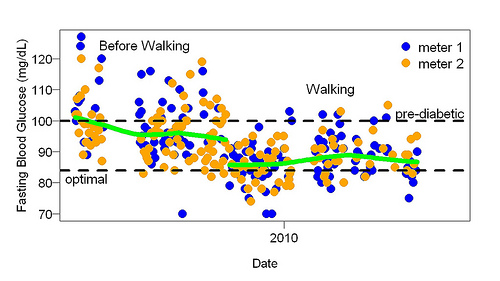A successor to Medical Hypotheses, titled Hypotheses in the Life Sciences, will soon be published. I asked Bruce Charlton and William Bains, the founder of the new journal, about the economics of the situation.
ROBERTS Did Medical Hypotheses make money for Elsevier? How much did it cost to run per year (leaving aside time contributed by you and the editorial board)? How much of that did Elsevier pay?
BRUCE CHARLTONÂ Medical Hypotheses did for sure make money for Elsevier – but I was never allowed to see the accounts.
I was told circa April 2009 that that the journal still made a profit even after page charges were abolished in early 2009 (income from things like subscriptions, sales of reprints including paid downloads, but mainly from its share of internet access ‘bundles’ via ScienceDirect – which is purchased mainly via library subscriptions from colleges etc).
Costs were my salary plus a share of the Elsevier editorial team – the journal secretary, the person who put together the issues and the manager – i.e., three main people at Elsevier each of whom worked on a group of journals.
Before 2009, when Medical Hypotheses still had page charges, the journal will have been very profitable since it had the above sources of income plus about page charges at about 60 dollars per thousand words, for a journal of between 160-240 pages, with about 500 words per page – that’s roughly 50 thousand dollars extra income per issue – with 12 issues per year that is roughly half a million dollars p.a. in page charges alone. Over seven years as editor I must have generated a few million dollars income for Elsevier.
So – in my opinion Elsevier’s behavior with Medical Hypotheses does not make business sense, since it lost them a lot of income and risked even more. Also hounding a successful editor, and sacking him before the contract was finished and with issues for 2010 un-compiled (and with nobody lined up to replace me) did not make business sense, nor did the mass of bad publicity all this generated for Elsevier.
My inference is that an individual or group in Elsevier senior management – perhaps Senior Vice President (USA) Glen P Campbell, who began the whole business and who has remained personally active in it (including the appointment of the new editor) – I guess that Campbell took a personal interest in Medical Hypotheses and in my editorship for reasons unknown to me – and drove the whole process.
The most sinister aspect of the whole thing for me is that senior Elsevier managers are now exerting personal influence on the content of the scientific literature and the conduct of science (overseeing appointment of editors, new restrictions on editorial conduct etc) – and they are doing this not for business reasons, but presumably to pursue their own private agendas.
The strict legalistic definition of academic freedom
(for what it is worth — see writings by Louis Menand)
is that academics be autonomous in the conduct of academic work (conduct, appointments, promotions, reviewing etc). The Medical Hypotheses Affair shows Elsevier very clearly in breach of academic freedom, and every competent editor will immediately recognize this fact.
In addition, in the later stages of the journal, Elsevier managers were also involved in covertly selecting (i.e. rejecting) what they considered ‘controversial’ Medical Hypotheses papers – the papers were intercepted after I had formally accepted them and held back, some were later rejected.
Elsevier also employed the Lancet (which they own) to choose ‘peer reviewers’ for the Duesberg and Ruggiero papers and arrange to have them rejected (using criteria quite different from those of Medical Hypotheses).
So that we know for sure that the Elsevier owned Lancet (one of the most prestigious medical journals in the world – perhaps the most prestigious?) is nowadays in the pocket of Elsevier management, and willing to do dirty jobs for them.
Yet there has been no outcry against Elsevier’s breach of academic autonomy from senior journal editors (nothing from the editors of Nature, Science, Lancet (understandably, since they are Elsevier employees), NEJM, JAMA, BMJ etc.). This silence means, I take it, that these senior editors are not any longer autonomous journals, but are nowadays in the pocket of their own publishers and live in fear of their own jobs.
The Medical Hypotheses affair is therefore a straw in the wind: an indicator on a small scale of what is happening at the larger scale: i.e. the thoroughly dishonest and hypocritical state of modern science and academia, and the domination of the content and conduct of science by outside interests.
But the unusual point that is not well understood is that key aspects of these outside interests are not always operating in profit maximizing ways. My understanding is that senior managers (in the private and public sector) are ‘using’ – even exploiting – their organization’s resources in pursuing personal goals – engaging in a kind of moral grandstanding, in making large gestures which show how ‘ethical’ they are in their views – at everyone else’s expense.
This can be most clearly seen in the ‘Green’ ‘ethical’ behaviours linked to the Global Warming scam – senior managers have shown themselves willing to sacrifice efficiency in pursuit of large moralistic policy gestures of ‘caring about the planet’ with which they become personally associated (recycling schemes, fair trade, campaigns of ‘save energy’ or promote public transportation among staff etc – none of which are actually effective in terms of real world effects, but which are effective in expressing ‘concern’).
Such moral gestures are invariably designed to appeal to elite PC opinion – it is a major form of status competition among the elites. My guess is that something of this sort is behind what happened at Medical Hypotheses: a senior manager or group of managers at Elsevier probably wanted to show themselves and their peers that they were taking a strong ‘moral’ stance against people who published AIDS-denialist papers.
